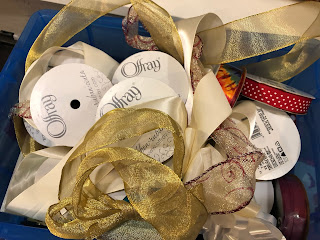December 2021 Reading
Made it to the end of the year of reading! I expected to do more reading in December, but somehow that didn’t happen. I did manage to read ten books, eight of them fiction and two non-fiction.
Fiction first. My go-to relaxation reading these days is the work of Ann Cleeves. I read the first three Shetland mysteries this month, Raven Black, White Nights, and Red Bones. All three are compelling and lyrical and generally awesome. Coincidentally, the new season of the TV show came out this month, which is also awesome, but different than the books, most noticeably in the casting of Jimmy Perez, who shows his Spanish ancestry in the books and in the show is a very blond guy. No spoilers, but there are also significant plot/character differences. I also read the first of her Matthew Venn books, The Long Call. Another detective to love! Yay!
My tour of the works of Ursula Le Guin continued with The Beginning Place. This one stands out for the sheer beauty of the writing. It’s also a lovely story of overcoming. Unlike some other parts of Le Guin’s work, the speculative aspects are not immediately apparent. It takes a while for the other dimension to reveal itself. I loved it.
I am not entirely sure how The Soda Fountain Conspiracies, Volume I by D.J. Saether ended up on my to-read shelf. I thought Brent gave it to me because he tangentially knew the person who wrote it, but he doesn’t remember. It was all right. It has the feel of a first novel. I liked many of the ideas—who doesn’t want a secret society of librarians?—but the execution was not fabulous.
I came to James Fenimore Cooper’s Last of the Mohicans knowing almost nothing about it. I had, somewhere in my head, the name of Natty Bumppo, but that’s all. On one level, it’s a straight adventure novel with plenty of action. The prose is elaborate, but beautiful, rooted in a landscape that Cooper seemed to love. The book suffers from the preconceptions of its time, however. Unsurprisingly, the portrayal of indigenous people is problematic and frankly it is shocking that humans have survived all this time if women are anything like the ridiculous helpless versions in this book. I think of this as the Kipling problem. Good writers have to be observant and both Cooper and Kipling, in their respective environments, did note and use details of the cultures they were describing. They had lots of data, but they did not use the data to examine their conclusions about how the world is. White men, in their view, are the pinnacle of everything and those who are not white men are less valid, even when their observable characteristics are superior. And, in this instance, the point is underlined by only the white men and the most decorative and whitest of the white women surviving. (I don’t think it’s much of a spoiler, given the age of the book and its title.) I guess I’m glad I’ve read it, but I’m not in a rush to read it again.
I discovered, when I went to buy the newest Neal Stephenson book, which was not quite out yet at that time, that I had missed one in the meantime. So I fixed that problem. Fall is great. What is life? What makes a world? What makes a society? Who should be in charge? The characters are mostly likeable and the prose is engaging and the ideas fascinated me.
On to non-fiction. Neil Gaiman’s book Art Matters is a quick read with evocative illustrations by Chris Riddell. These are tough times and it is good to be reminded about the important things that get us through. This book helps.
Finally, I read Dave Grohl’s memoir The Storyteller. I came late to the DG party, but man, do I have a serious crush on him. He’s hilarious and smart and wickedly talented. He also works his butt off and appreciates the people who have helped him. I laughed out loud often and read parts of the book out loud to my family. (I also have this as an audio book, so I’m looking forward to hearing the whole thing again.) Read this book.
That’s it for the year!
Winter total: 22 books
2021 total: 73 books
Labels: books













